Winter can be a beautiful season for getting out and exploring, what with the crisp air and stunning landscapes. Yet even on brighter days, you can still find yourself caught out by wet conditions and mud! As the dog lovers among us will know, this can lead to a number of problems when it comes to paw cleanliness. To help you and your dog have a more enjoyable winter outing, we’ve put together some valuable dog training tips for walking dogs in cold weather.
The Importance Of Keeping A Dog’s Paws Clean
Cleaning a dog’s paws after a winter walk is an important skill to have down when it comes to caring for our furry friends. If left in contact with a dog’s skin for a prolonged period of time, the dampness of mud can lead to irritation, itching, and even infections. More than that, mud can also contain harmful bacteria, as well as small rocks, debris, and other abrasive materials that can lead to cuts and scrapes on their paw pads. All this can make walking your dog in winter something of a challenging process!
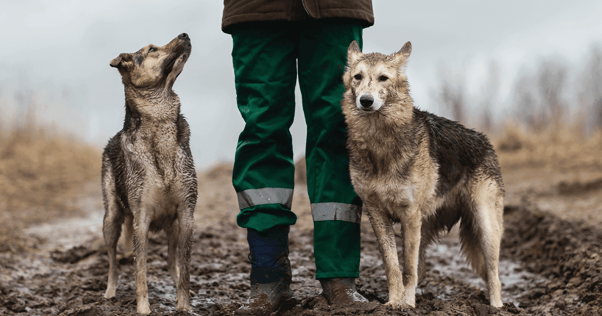
This doesn’t mean we need to avoid mud altogether, of course. After all, sometimes it’s unavoidable. However, it’s important we take the time to ensure we’re cleaning our dogs’ paws whenever we get in from a winter walk. This will help to keep our pooches safe, healthy, and happy all season long!
Getting Your Dog Comfortable With Paw Handling
Cleaning your dog’s paws can be a challenging task if your dog isn’t used to having their feet touched. Many dogs are okay with certain forms of handling, but their paws can be more sensitive than other areas of their bodies and they may find this form of contact difficult to accept.
With this in mind, it’s helpful to introduce positive handling to your pup early on. Positive associations with touch can make your dog more receptive to paw cleaning and other grooming activities that are essential for dogs in winter. A well-socialized puppy is also more likely to view new things as safe, which helps them to accept new things later such as having their nails clipped or their teeth brushed.
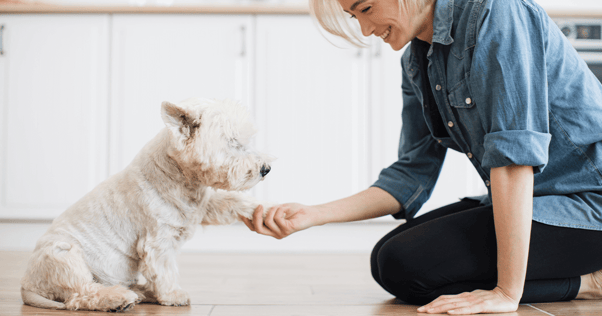
Desensitisation And Counterconditioning For Paw Comfort
If your dog doesn’t like having their paws touched then both desensitization and counterconditioning can be helpful dog training tips. These processes involve changing your dog’s negative association with paw handling into a positive one. The key to this is breaking down the paw-cleaning process into small steps and pairing each step with rewards and positive experiences. Start by gently touching your dog’s foot and gradually progress to more complex actions, like touching pads, checking nails, and using a towel. Using small steps like this makes it easier for your dog to understand what they should be doing to earn a reward, making the process of cleaning your dog’s paws more enjoyable for you both!
How To Clean A Dog’s Paws
Remember, for any training, your dog should be calm, relaxed, and in a good frame of mind for learning. That means no tiredness or hunger! Reward your dog as they complete each action as well as for remaining calm and relaxed. Don’t move to the next step until they are comfortable with the one you are currently on as they need to be happy with each step and have a positive association. If your dog seems uncomfortable with any step, stop, and go back a level. It may be that the new step is too big a jump and needs to be further broken down.
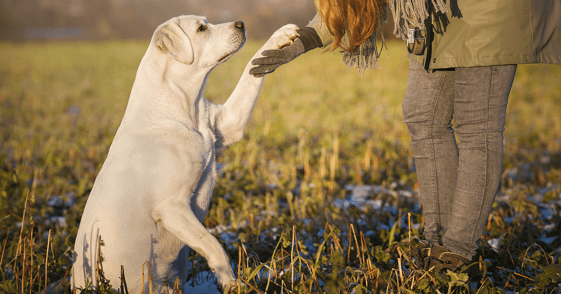
Once you’ve taken all these dog training tips onboard, it’s time to begin cleaning your dog’s paws! Here’s the step-by-step process:
- Start by touching your dog’s foot.
- Next, hold their paw up. This involves both elevating the foot as well as the pressure of holding, so you may find it beneficial to split this into two separate steps.
- While holding up their paw, touch their pads and between the pads, and the nails and between toes.
- Using the other hand to the one holding their paw, touch a towel to their foot.
- Use the towel to gently rub their paw a couple of times.
- Rub with the towel a little more vigorously, progressing to clean between their pads and toes.
Training To Shake Paws and Self-Paw Wiping
Teaching dogs to ‘shake paws’ is another great piece of advice for dog owners. This is not only a friendly gesture but also helps during paw cleaning. By having your dog place their paw in your hand, you can easily inspect them for any injuries as well as remove any mud.
Similarly, some people train their dogs to wipe their paws on a towel or mat after coming in from a winter walk. If you’re interested in trying out this skill, begin by placing treats under a towel and encourage your dog to paw at it to access the treats. This action can be rewarded and gradually developed into paw wiping.
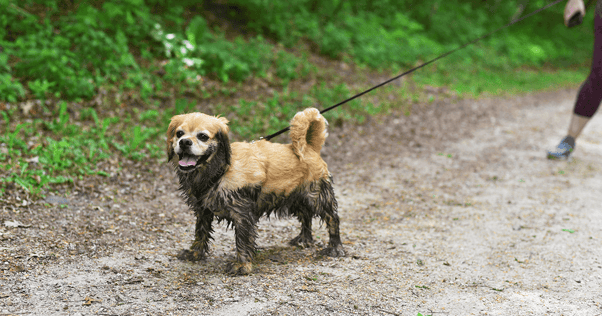
Introducing Boots For Protection
If you’re walking dogs in cold weather on a regular basis, training your dog to wear boots or booties can be another good idea. These provide extra grip on slippery surfaces and protect your pooch’s paws from cold and wet conditions. As with all dog training tips, you should train your dog to accept boots using similar positive reinforcement techniques, gradually increasing the time they spend wearing them and encouraging movement.
Ease Your Dog Into Wearing Coats
Coats are great for keeping dogs warm and dry during walks, but some dogs may resist wearing them due to the unfamiliar sensation. Help your dog become comfortable with wearing a coat by introducing it gradually. Place the coat on the floor with treats around it, encouraging your dog’s investigation and rewarding calm behaviour. Next, introduce any noises associated with the coat such as the sound of Velcro. If your dog reacts to the noise, try repeating the sound further away and gradually decrease the distance. Once your dog is comfortable with this, lure their head through the neck hole using a treat, then allow the coat to rest on their neck. Finally, move to fitting the coat and wearing it for a short period of time and encouraging them to move around.
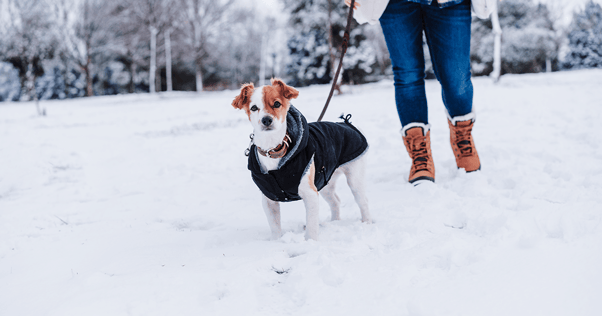
Use A Calming Dog Collar
If your dog struggles with any stages of having their paws cleaned, or if they find the process stressful, an ADAPTIL Calm Collar is an ideal solution. These work by releasing calming pheromones that match those mother dogs use to reassure their pups, and can be used both in the house and while out on walks. Fitting a calming dog collar as you prepare for the winter is a great way to ensure they remain relaxed and in the best state of mind to learn new skills!
Are you interested in learning more about cleaning a dog’s paws or general tips for dogs in winter? Get in touch and we’ll be happy to share all the advice we can, plus tell you everything there is to know about the benefits of using ADAPTIL Calm Collars! You can also stay informed with our latest guides, Q&As, and general tips by signing up to our newsletter.




